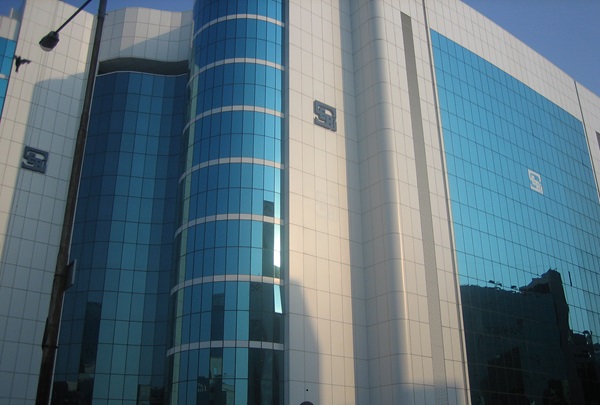.png)

Krishnadevan is Consulting Editor at BasisPoint Insight. He has worked in the equity markets, and been a journalist at ET, AFX News, Reuters TV and Cogencis.
May 27, 2025 at 9:30 AM IST
The investor base of Central Depository Services (India) Ltd is thinning out, and not just on the retail side. Domestic mutual funds trimmed their holdings to 7.18% in March 2025 from 11.21% just a quarter earlier. Foreign portfolio investors cut even deeper, slashing their stake from 17.01% to 11.32%. The stock has declined 19% year-to-date, underperforming constituent Nifty 500 and Nifty SmallCap indices.
What's spooking institutional money? A quiet but consequential shift in how capital market transactions are priced in India.
SEBI's so-called "True-to-Label" regulation, in force since October, is the catalyst. Under the new rules, market infrastructure institutions, including depositories, exchanges, and clearing corporations, must now pass on fees to brokers at actual rates. No more volume discounts, no more markups, and no more under-the-table rebates.
Brokers, in turn, must relay these flat fees directly to clients. This change isn't just cosmetic for depositories like CDSL and National Securities Depository Ltd, it rips out the pricing arbitrage that supported their revenue models, particularly during the retail boom.
CDSL, with its heavy retail tilt, is bearing the brunt. Transaction charges accounted for roughly 60% of its top line. The earlier slab-wise pricing allowed it to benefit indirectly from brokers charging clients on inflated slabs. Now, that cushion is gone. Moreover, many discount brokers—once the lynchpin of retail participation—are hiking fees to plug the rebate gap. That's discouraging smaller investors from trading frequently, directly denting CDSL's mainstay of high-volume, low-value trades.
The pressure is already showing. To staunch the bleeding, CDSL has slashed its transaction fees to ₹3.50 per debit from the earlier ₹3.75–₹5.50 range. It's a tactical move to defend volumes and a public admission of pricing pressure. Whether it works remains to be seen. Lower fees may sustain activity, but they also compress margins at a time when growth levers are limited.
The long-term implications are clear. CDSL must rewire its business model. That could mean doubling down on fintech partnerships, pushing deeper into value-added services, or exploring newer monetisation layers like data analytics or API-based offerings. But these shifts demand time, capital, and a strategic shift, not something that can be achieved through a mere rate tweak.
NSDL is less exposed in the short run. Its client base is largely institutional, and it leads the market in value terms. Yet even NSDL can't stay immune. If retail participation stays muted and liquidity remains patchy, the knock-on effects could erode pricing power across the board, forcing a rethink on strategy.
Both depositories now face an unfamiliar future bereft of volume-based pricing as a crutch. The easy money from India's retail trading surge is off the table. They will need cost discipline, product innovation, and a sharper value proposition.
From an investor's perspective, this marks a transition from cash-cow stability to regulatory flux. Valuation models must now incorporate lower revenue visibility and higher reinvestment needs. For NSDL, which is IPO-bound, the timing couldn't be more delicate. Its institutional heft is a plus, but the shifting ground beneath its feet might complicate the pitch.
On the flip side, SEBI's rule brings overdue clarity. Investors now see the real cost of trading. Gone are the days of opaque pricing baked into brokerage spreads. That transparency, though painful for market infrastructure institutions, is a long-term win for market integrity.
But markets tend to price in pain faster than they reward payoff. And the fall in institutional interest in CDSL suggests that, for now, the Street sees more risk than reward.
For NSDL, the regulatory tremors may feel distant, but the ground is shifting nonetheless. Its institutional base offers temporary insulation, not immunity. If the flat-fee era normalises razor-thin margins and erodes pricing power across the value chain, NSDL's premium positioning could come under pressure.
Investors eyeing its IPO will ask how much of NSDL's current valuation bakes in yesterday's economics? And what's the plan if the easy yield on custody and clearing starts to compress? NSDL now needs to prove it can lead in reinvention too, not just ride the coattails of institutional stability.




